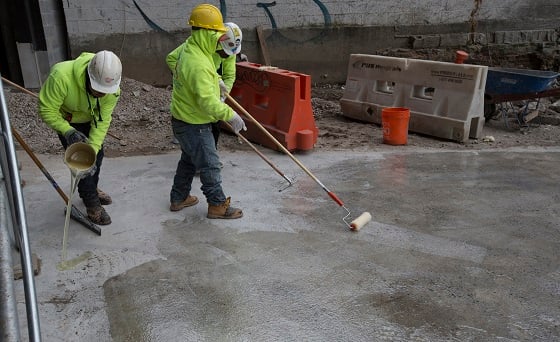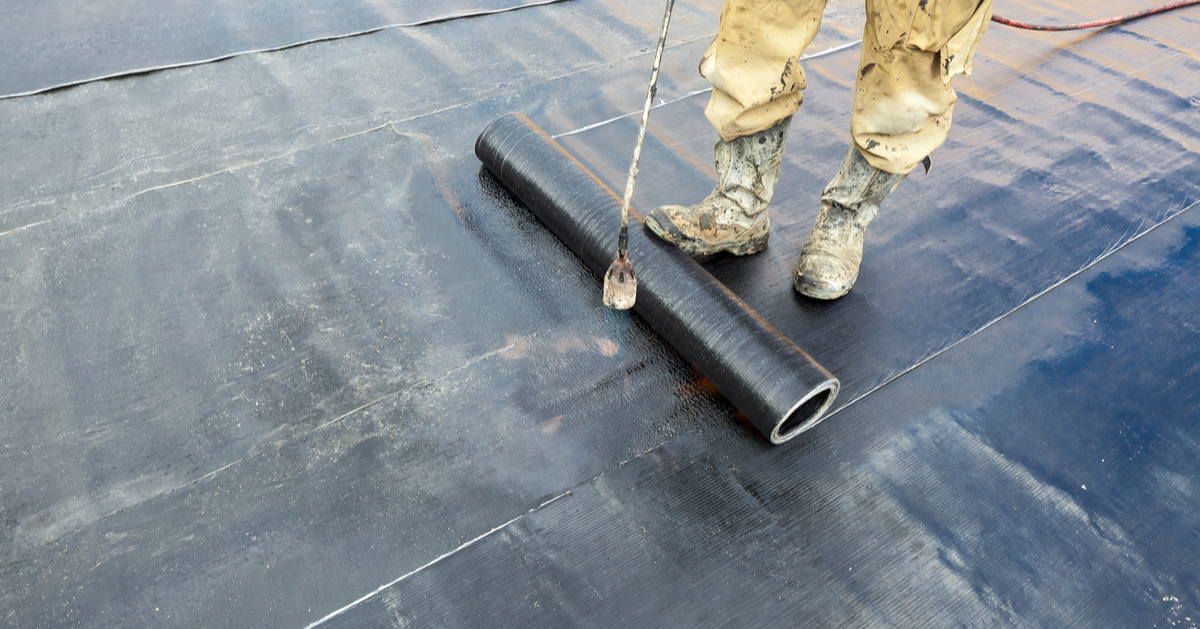Sorts of Waterproofing: Discovering the Different Approaches and Their Applications
Waterproofing is a crucial aspect of building and construction and maintenance. It shields structures from the destructive impacts of water damages. There are a number of approaches available, each with its one-of-a-kind applications and benefits. From membrane layer systems to cementitious solutions, recognizing these options is necessary for effective application. The choice of waterproofing technique can substantially impact toughness and longevity. Checking out these numerous methods discloses their distinct benefits and possible challenges, triggering additional factor to consider of perfect options.
Membrane Layer Waterproofing Systems
Membrane waterproofing systems work as a crucial barrier against water breach in numerous structures. These systems usually contain slim sheets made from products like rubber, polycarbonate, or bitumen, which are put on surfaces to stop dampness infiltration. They can be mounted above or below grade and are particularly effective in areas susceptible to high water exposure, such as basements, roofings, and foundations.The installment procedure entails cleansing the substrate, applying adhesives or primers, and exactly fitting the membrane layer to assure complete coverage. Membrane systems can be either completely adhered, mechanically attached, or laid loose, depending upon the specific demands of the job. They supply longevity and adaptability, accommodating architectural movements without compromising their waterproofing capacities. In addition, these systems can be strengthened with additional layers for enhanced protection. Ultimately, membrane waterproofing systems are essential for safeguarding frameworks versus water damage and maintaining lasting integrity.
Liquid-Applied Waterproofing Coatings
Liquid-applied waterproofing coatings give a functional option for safeguarding surfaces from water seepage - Basement waterproofing Omaha. These coverings contain fluid products that, when applied, create a seamless, adaptable membrane layer. Their adaptability enables application on different substratums, including concrete, steel, and wood. The coatings can be utilized in diverse atmospheres, from residential to commercial settings, making them appropriate for roofing systems, structures, and below-grade structures.One significant benefit of liquid-applied coverings is their capacity to comply with uneven shapes and permeate splits, producing a durable barrier against dampness. They frequently exhibit exceptional bond properties and resistance to UV radiation, guaranteeing longevity and toughness. Additionally, the application procedure is typically uncomplicated, enabling for fast installation and decreased labor prices. This method also lessens the threat of water pooling, as the continuous layer successfully routes water away from susceptible areas. Generally, liquid-applied waterproofing coatings are an effective option for complete water defense
Cementitious Waterproofing Solutions

Cementitious waterproofing options provide a durable option for frameworks needing dependable dampness security. These systems primarily use a blend of concrete, sand, and chemical ingredients to create a water-proof barrier. They are often applied to surface areas such as concrete walls, structures, and floorings, offering a sturdy, resilient protection against water intrusion.One of the vital advantages of cementitious waterproofing is its convenience of application; it can be applied utilizing a brush, roller, this page or spray, making it suitable for different task sizes. Furthermore, this approach is compatible with several surfaces and can typically be made use of in conjunction with various other waterproofing techniques.Cementitious solutions are especially reliable in settings where water exposure is a worry, such as cellars or below-grade structures. Their outstanding attachment residential or commercial properties ensure that they bond well with substratums, providing a strong and impenetrable layer versus dampness infiltration.
Bentonite Waterproofing
Bentonite waterproofing is a highly effective technique that uses salt bentonite clay to produce an all-natural barrier against water. This method exploits the one-of-a-kind buildings of bentonite, which increases upon call with water, sealing any type of prospective leakages and avoiding moisture infiltration. It is frequently utilized in various applications, including structure wall surfaces, tunnels, and keeping wall surfaces, where water resistance is essential.Bentonite can be applied in a number of types, such as panels or blankets, supplying adaptability in installation. Its ability to self-seal makes it an appealing alternative for locations subject to shifting soil or rising and falling water degrees. Additionally, bentonite waterproofing is eco-friendly, as it is a natural material that does not introduce harmful chemicals into the environments.
Drainage and Outside Waterproofing Solutions
Effective waterproofing often includes a combination of strategies, including drain and outside systems. Drainage systems, such as French drains pipes and sump pumps, are created to redirect water away from frameworks, reducing hydrostatic pressure against foundations. These systems are necessary in stopping water accumulation that can cause architectural damage and mold growth.External waterproofing, on the various other hand, includes using safety obstacles to the structure's exterior. Strategies such as the setup of water resistant membrane layers, finishes, have a peek here or sealants can assist avoid water infiltration. This technique not just protects the structure but also boosts the overall toughness of the structure.Together, drain and external waterproofing systems create a thorough solution to take care of water effectively. By carrying out these methods, homeowner can protect their financial investments versus the destructive impacts of wetness, ensuring lasting security and safety and security for their structures.
Regularly Asked Questions
How Do I Pick the Right Waterproofing Approach for My Job?
Choosing the appropriate waterproofing technique depends on factors such as job kind, ecological conditions, budget plan, and preferred long life. Reviewing these elements permits educated choices customized to particular requirements and requirements.

Can Waterproofing Be Applied in Cold Climate Conditions?
Waterproofing can be used in cold weather conditions, yet it requires certain materials and methods. Cold temperatures may impact healing times and adhesion, demanding cautious choice of products created for low-temperature application.
What Are the Common Signs of Waterproofing Failing?
Usual indicators of waterproofing failing consist of visible water spots, peeling off paint, moist odors, mold development, and fractures in wall surfaces or structures. Sump pump discharge drainage Omaha. These indications recommend that dampness is passing through the barrier, jeopardizing its effectiveness
Exactly How Long Does Waterproofing Last Prior To Needing Maintenance?
The longevity of waterproofing differs, usually lasting in between 5 to one decade. Variables such as worldly top quality, ecological conditions, and maintenance methods affect its This Site sturdiness, necessitating regular assessments to assure reliable security against water intrusion.
Are There Eco-Friendly Waterproofing Options Available?
The question of environmentally friendly waterproofing alternatives exposes a growing interest in sustainable materials (Water Solutions). Various all-natural substances, such as plant-based sealants and recycled products, supply efficient solutions while lessening ecological effect, appealing to eco mindful consumers